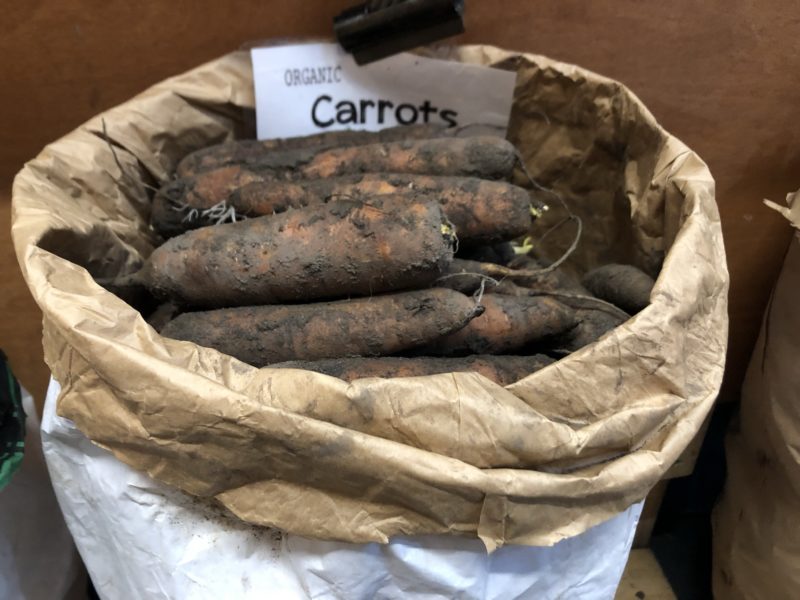

My favorite moment returning home to Sag Harbor after renting our house out has always been discovering Renter Food, the massive amount of stuff left behind that I’d never think to buy, but was happy to find (Cha-Ching!) This was our junk food Christmas. While the kids would gorge on Pringles and Cap’N Crunch, I’d pop open the freezer and think, ‘So that’s who buys kiwi flavored Bacardi.’ I liked to see our marathon sugar high as being frugal, and doing the planet a favor.
But the truth is that I’m like most Americans; I think I waste less than most. In a recent survey, 67 percent of people in the U.S. believed that they threw away less food than their neighbors. It’s the same tendency that makes us think we’re better drivers than everyone else on the road.
In truth, only 45 percent of all food produced in the United States actually gets eaten. The average American wastes over half a pound of food each day, coming to about 185 pounds a year. That’s almost half of all daily calories consumed and enough to fill 730 football stadiums.
When you toss a half-eaten apple, you’re not just throwing away food, but squandering the enormous amount of resources that went into producing it: seeds, fertilizer, labor, water, and the fuel it took to grow, process, transport, prepare and store the food. Greenhouse gases are generated at every step of the process.
And that’s before it goes to the landfill. Here, this seemingly innocent apple produces methane, a sort of supercharged greenhouse gas that’s 23 times more powerful than CO2.
If global food waste were a country, it would have the third highest carbon footprint behind China and the United States.
But nobody sets out to waste food. Analysts describe what’s called the “good intentions” paradox; when we eat healthier food, try a new recipe or want to be good hosts, we waste even more food.
This has been especially true during the COVID pandemic. When the numbers began to spike last April, I felt the need to buy a large bag of dried field beans. Seriously? What even are field beans? They’re just one of those things you need when shopping for the apocalypse.
But even in more normal times, we’re not so normal. We tend to shop aspirationally. Do you really think you’re going to eat all 12 avocados in the bag before they go bad? Can you really finish that entire wheel of cheese? (Don’t answer that).
How does one avoid the Costco syndrome? Plan, plan and then plan some more. Always make a list. Not a list person? Snap a “shelfie” instead (Yes, that’s a thing). Then stick to the list. Buy only what you need. And never shop when you’re hungry.
Living on the East End, land of the year round farm stand, we’re especially conditioned to seek out the freshest produce. We fill our carts with “good fat” avocados and antioxidant-rich berries. At the farmers’ market, one envisions herb-sprinkled veggie roasts and salads that we’re definitely, absolutely going to make. Then life happens, the salad becomes a pipe dream and more food is wasted.
If you’ve spent way too much time in the kitchen these past six months, boredom may have driven you to get COVID creative. But beware the experimental recipe. Ask yourself how often you’re going to use that freshly made Jamaican jerk sauce (honestly). By the time you can pronounce an ingredient’s name, it may already have gone bad.
Little known fact: “ugly” food tastes just like “regular” food. A misshapen carrot has the same nutritional content as a straight carrot. And you don’t have to eat the tiny bruise on that banana. We live in the era of “camera cuisine” where Instagram-ready tomatoes and cosmetically flawless peaches appeal to our distorted sense of what food should look like. Help reduce food waste by choosing weird looking fruit and imperfect veggies. Ask grocers to offer discounted produce bins. If Walmart can do it, so can they. Better yet, join Misfit Market that sells “ugly” produce for 25 to 40 percent less.
Don’t be afraid of the back of your fridge. I used to think that if I just ignored all those unidentified sitting objects, they’d magically disappear. This strategy seems to cause massive waste. Remedy it by putting the oldest food in front. At eye level. And in clear containers so that you know what you’re dealing with.
Learn to love your freezer. Visit it often. The freezer is a lazy cook’s best friend, a way station for tomatoes and apples until you feel like making sauce. Nothing can go bad if it gets to the freezer in time.
Our reverence for complicated expiration dates also leads to unneeded waste. Things have gotten a little out of hand when honey has a “best by” date, even though it doesn’t go bad. Even the humble water bottle has an expiration date. Keep in mind that producers determine these dates, not regulators. Dates are mostly only suggestions for optimal freshness, not safety.
Cooking with everything reduces the most waste. Mary Morgan, of Drawdown East End (which is affiliated with Project Drawdown, a comprehensive plan of 80 science-specific solutions to slow and reverse climate change), says that she and her husband, Tom, make a game out of finding ways to see how much they can keep out of the trash. Embrace the challenge. Look at every item, every step of the way and ask yourself, “What can I use that for?” Wilted herbs, overripe bananas and even kiwi skin, can blend into a nutritious smoothie. Beet tops, broccoli trunks and cauliflower leaves sautéed into a stir fry. Toasted acorn and butternut squash seeds are full of nutrients. Cheese ends flavor soups and pestos. Add feathery carrot tops, celery leaves, and parsley stems to a salad. Fat from meat makes a savory butter alternative. Apple peels infuse tea. Even egg shells can be dried and powdered into a calcium supplement, which may sounds completely insane, but proves that everything can be used.
Ellen Greaves, a private chef in Southampton, makes a weekly “Mustgo soup” because everything that’s not used by the end of the week must go. She says, “You make it by just exploring the fridge.”
After brainstorming how to use almost everything, there will always still be something left to compost. Even if you don’t use it yourself, compost keeps that final bit out of the landfill.
“Worldwide, cutting food waste is the third most important way to reduce carbon emissions,” says Sherry Thirlby, also of Drawdown East End. “In the U.S., it’s the number one way.” For context, electric vehicles rank 26th.
As the old adage goes, “When life gives you lemons, sauté with Mediterranean chicken, puree into a smoothie, infuse in water, reduce your carbon footprint and save money.”
Resources:
The Guestimator or MealPrepMate at savethefood.com: Tool for planning holiday meals.
Your Plan, Your Planet App: helps track your food reduction at home.
James Beards’ #WasteNotWednesdays or “Waste Not” cookbook: recipes and tips on reducing food waste.
Drawdown East End webinar: “Waste Not Want Not. Cut Food Waste. Save Money” on YouTube, November 16, 2020.
eatthis.com: Find out which foods not to store next to each other.
 More Posts from Jenny Noble
More Posts from Jenny Noble